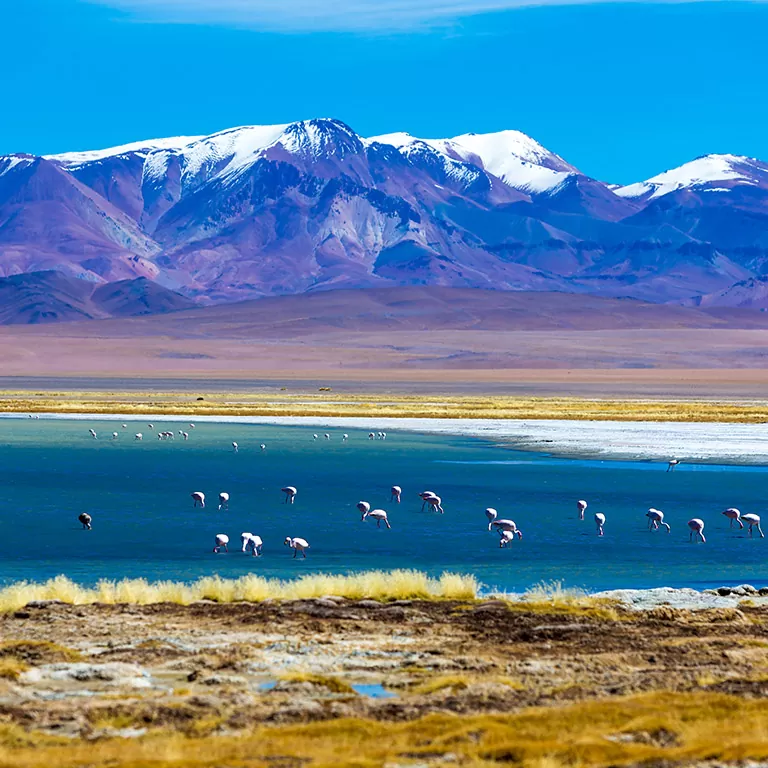
Extremely beautiful, but with expressively numerical characteristics, it’s difficult to describe the Atacama Desert, in Chile, without mentioning its impressive attributes, way beyond its incredible salt flats, valleys, volcanoes, geysers, lagoons and canyons with crystal-clear waters. Therefore, don’t get lost in numbers: it’s at an altitude of 4000 meters in a beautiful highland in the Andes, holding the title of the highest desert in the world, crossing the northern part of the country up to the frontier with Peru, extending for 1000 kilometers. Speaking of titles, the Atacama is the driest non-Polar desert in the world.
Yes, it hardly ever rains in the region. It is so high that the Pacific Ocean’s marine currents simply cannot reach there, and the clouds dissolve before reaching the desert. Here we find another numerical record concerning climatic conditions. In this case, it’s the variation that’s impressive, both positively and negatively: traveling in the desert is being prepared for changes in temperature that range from 0⁰C at night to 40⁰C in the daytime. None of this scares the lovers of trekking and mountaineering, as well as mountain bikers, motorcyclists, off-road drivers and horseback riders.
The incredible variation in temperatures explains the small number of inhabitants in the few towns and villages of the Atacama Desert, such as, for example, San Pedro de Atacama, one of the best-known towns, at an altitude of 2400 meters. Only about 3000 people live there. It’s considered a real oasis in the midst of the desert, since it’s in an isolated spot and serves as a meeting place for travelers. The town, in the most arid place in the world, is a lovely example of local towns that preserve their culture.
The historical preservation is truly impressive. If the item is wealth of registers, backpackers, photographers, and/or archeologists are the most interested in another number for your list: its uncountable archeological artifacts, especially mummies over 1000 years old, left by the Chinchorros, a people that inhabited the region at that time. Tourists also have their turn in the Atacama: yes, though it seems improbable, there is a night life. It’s not uncommon to see crowded bars and restaurants late at night, with tourists that gather together naturally.
Don’t miss visiting – Now, on to the tourist spots in the Atacama Desert. Starting with Salar de Atacama, the largest salt flat in Chile, part of a National Reserve, passing through the impressive Geysers del Tatio – which give the impression that the Earth is alive at each sight of the water gushing. Don’t forget the gravitational bath in the famous Lagoons of San Pedro de Atacama, where nobody sinks when they dive, due to the high salinity of the water, such as the Laguna de Piedra (Lagoon of Stone). Don’t miss visiting the Church of San Pedro de Atacama, the archeological sites of Pukará de Quitor and the Archeological Museum of Padre Le Paige. Lastly, take a photo next to La Mano del Desierto (The Hand of the Desert), a 10 meter high statue with many legends, made by Chilean artist Mario Irarrázabal.











